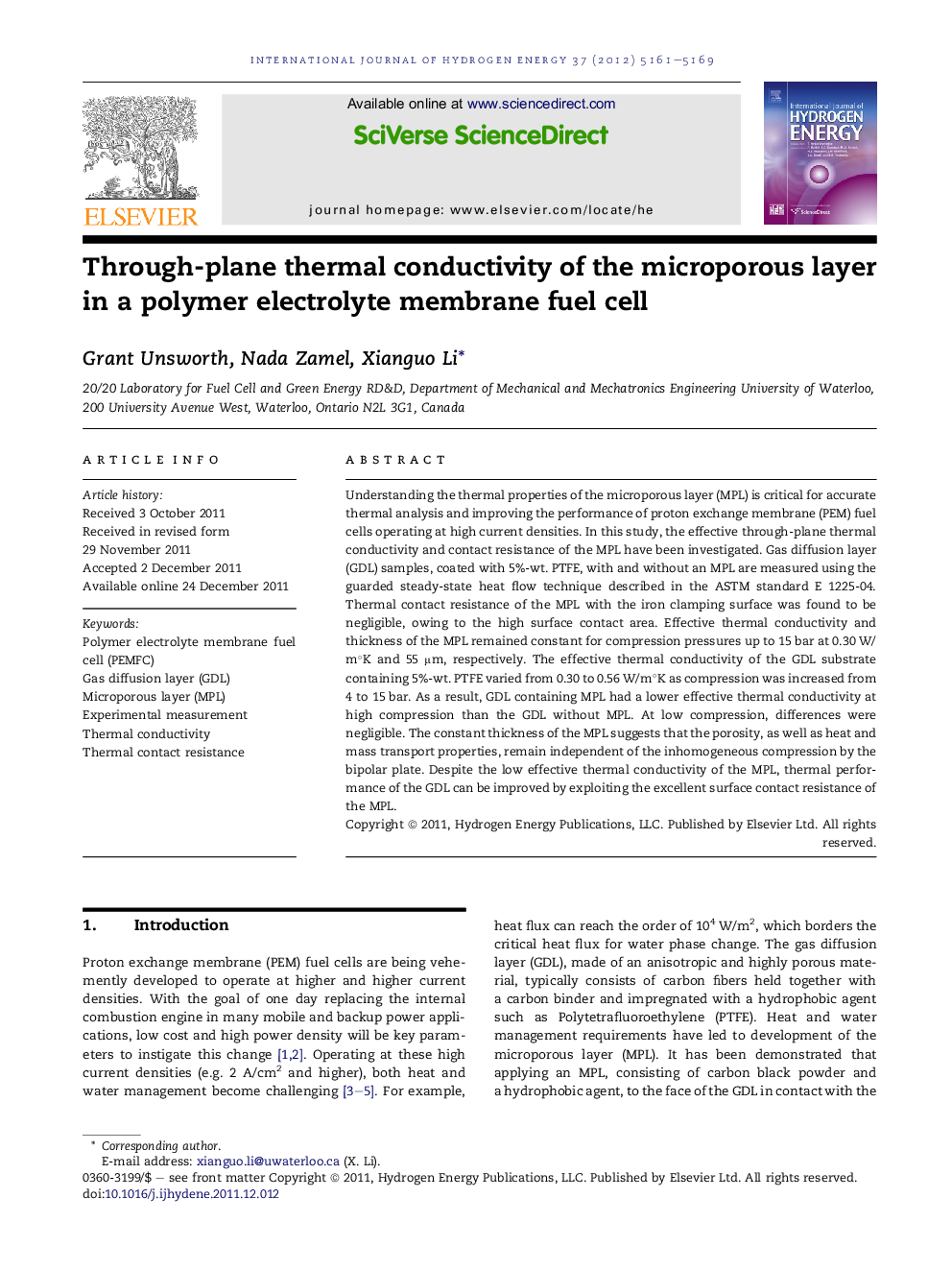| Article ID | Journal | Published Year | Pages | File Type |
|---|---|---|---|---|
| 1271536 | International Journal of Hydrogen Energy | 2012 | 9 Pages |
Understanding the thermal properties of the microporous layer (MPL) is critical for accurate thermal analysis and improving the performance of proton exchange membrane (PEM) fuel cells operating at high current densities. In this study, the effective through-plane thermal conductivity and contact resistance of the MPL have been investigated. Gas diffusion layer (GDL) samples, coated with 5%-wt. PTFE, with and without an MPL are measured using the guarded steady-state heat flow technique described in the ASTM standard E 1225-04. Thermal contact resistance of the MPL with the iron clamping surface was found to be negligible, owing to the high surface contact area. Effective thermal conductivity and thickness of the MPL remained constant for compression pressures up to 15 bar at 0.30 W/m°K and 55 μm, respectively. The effective thermal conductivity of the GDL substrate containing 5%-wt. PTFE varied from 0.30 to 0.56 W/m°K as compression was increased from 4 to 15 bar. As a result, GDL containing MPL had a lower effective thermal conductivity at high compression than the GDL without MPL. At low compression, differences were negligible. The constant thickness of the MPL suggests that the porosity, as well as heat and mass transport properties, remain independent of the inhomogeneous compression by the bipolar plate. Despite the low effective thermal conductivity of the MPL, thermal performance of the GDL can be improved by exploiting the excellent surface contact resistance of the MPL.
► Thermal conductivity of the microporous layer (MPL) is measured experimentally. ► Experimental design based on the ASTM guarded steady-state heat-flow technique. ► MPL has a lower thermal conductivity than its gas diffusion layer (GDL) substrate. ► MPL has a negligible contact resistance with adjacent surfaces. ► MPL does not compress under normal operating conditions in a fuel cell.
